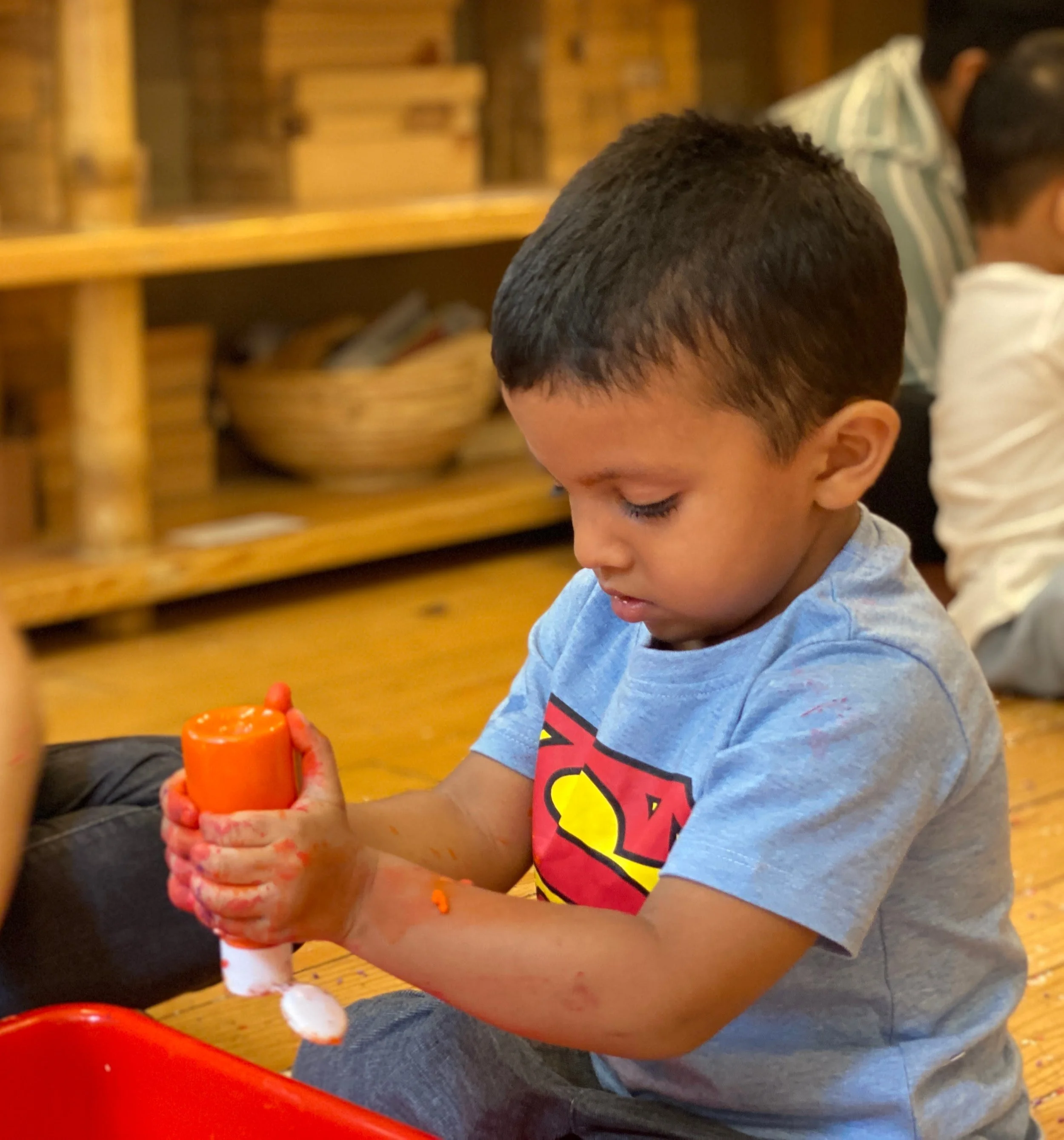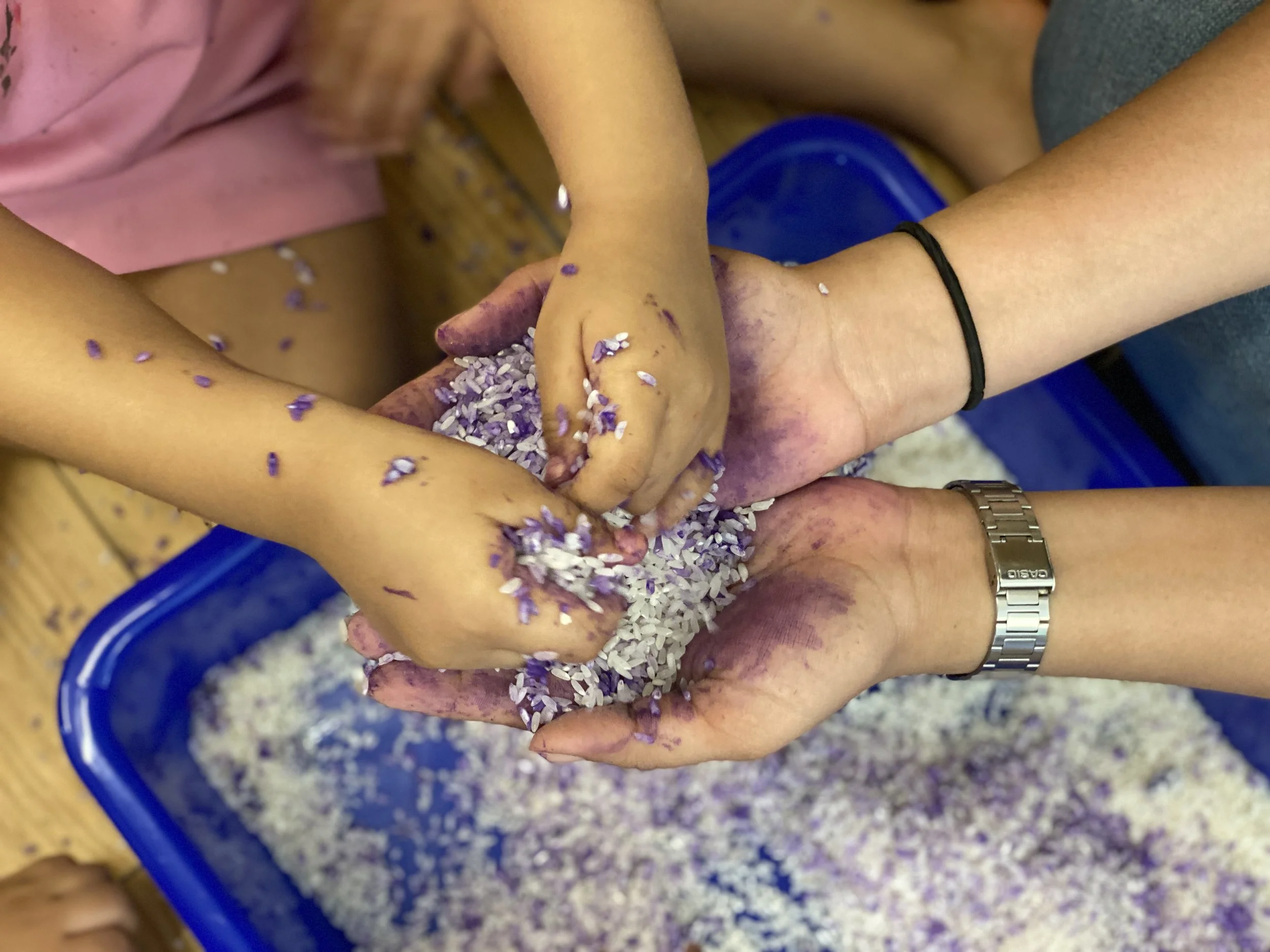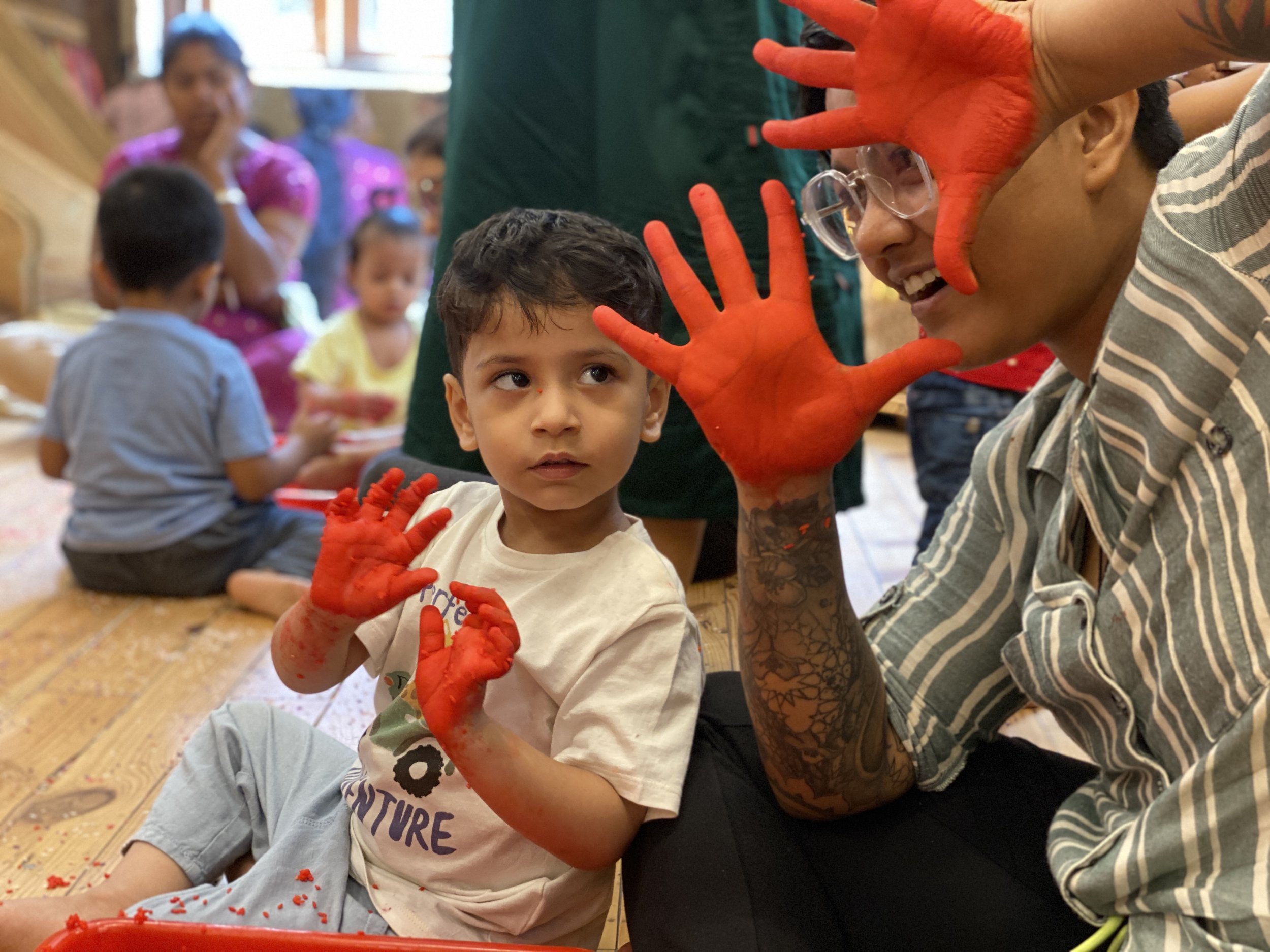Rice Colouring
Date - 28/04/22
When was it done - Sensory Activity
Materials required
Rice
Tempera Paints
Spoons
Small Bowls
Trays
Activity Prep
Trays were filled with rice and put aside
Tempera paints, spoons and bowls were then added to the trays for children to engage with
Invitation Set-Up
Invites were set up through the rice trays. The facilitators sat with the trays and asked the children to feel the rice.
Rice Play was a part of the invitation, which included, transferring and pouring rice from and in grapat cups.
Process
The rice colouring activity involves adding paints to rice and mixing it by hand.
Children’s Response
First, children started playing with just rice. Then they took turns squeezing paint out of the bottles into the tray. This was followed by mixing the paints into the rice by hand. Children would often pause to observe the rice and paint sticking to their hands and then resume the activity.
Precautions
Being careful that the rice is not consumed, specially coloured rice.
Communicating with children so as to avoid them from throwing the rice out of the trays.
Skills/Concepts
Fine Motors Skills - Rice colouring requires the movement of fingers and the palm in order to mix the rice and the paint well. It also requires children to apply some pressure when doing actions like squeezing.
Cognitive Skills - During this activity, children observe the result of their actions as they follow the process of mixing paint with rice. The concepts of colours and texture are also introduced to them through the activity.
Sensory Skills - Rice colouring acquainted children with wet and dry textures.
Rice and tempera paints, both have separate distinct odours, which engage children’s sense of smell.
Rice colouring is very visually appealing as the children watch the colours mix with rice in their hands.
Language Development - Activities like rice colouring provide children with the space to learn new words and communicate with them when they are engaging with the facilitators.







